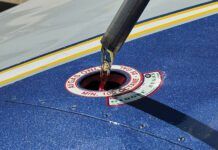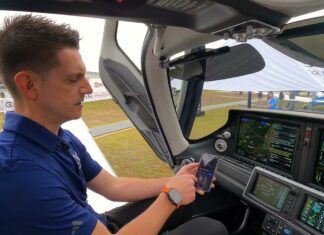
The crowds were big (686,000 visitors and 861 exhibitors, says EAA) at AirVenture 2024. And while our eyes were wide open looking for groundbreaking new products, we found few.
For years we have gauged the industry’s health by the products and services on display at the big show, and this year was predictably lean. There were some standouts worth talking about.
Avionics
If there was a head-turner in the avionics market, it might have been Dynon Avionics. It showed up with some notable improvements to its already good SkyView HDX integrated avionics suite, including a useful engine-out utility.
The new Emergency Glide feature will be in the upcoming SkyView HDX Software version 17.1, as well as in an upcoming software revision for its Advanced Flight Systems AF-5000/6000 Series sister product line of big-screen avionics.
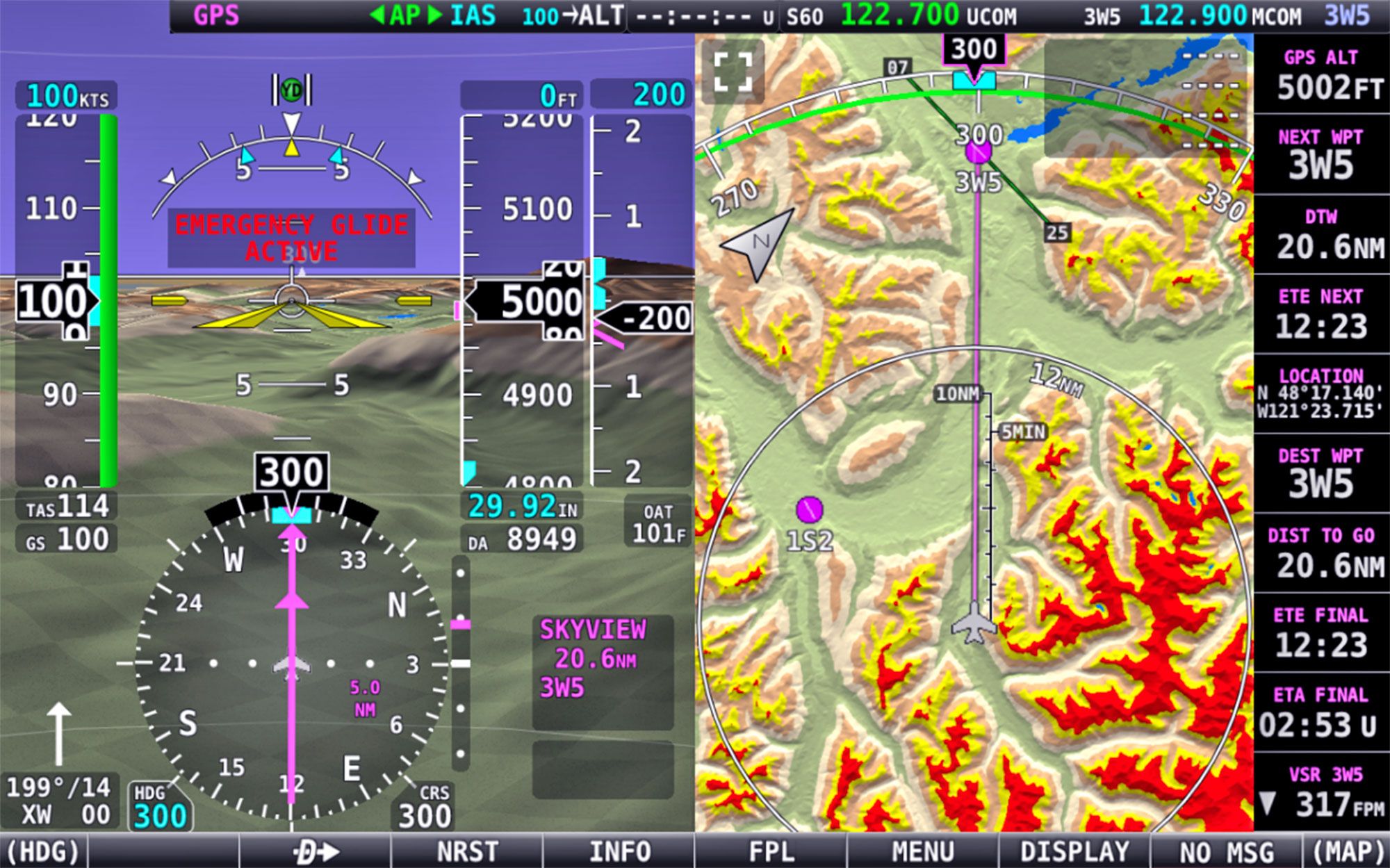
With the new feature, the pilot presses and holds the nearest (NRST) button and automatically engages the autopilot to configure to a preprogrammed best-glide speed. At the same time, the system will locate the nearest airport within gliding distance, accounting for wind and terrain obstructions. If the system finds a suitable airport, the SkyView HDX will command the autopilot to navigate the aircraft to the airport immediately. Taking it one step further, the system also automatically loads the airport identifier into the comm radio, making available all applicable radio frequencies. And, upon arrival over the airport, the autopilot sets up a banked orbit over the site and alerts the pilot to take over control of the aircraft. No automatic landing—yet.
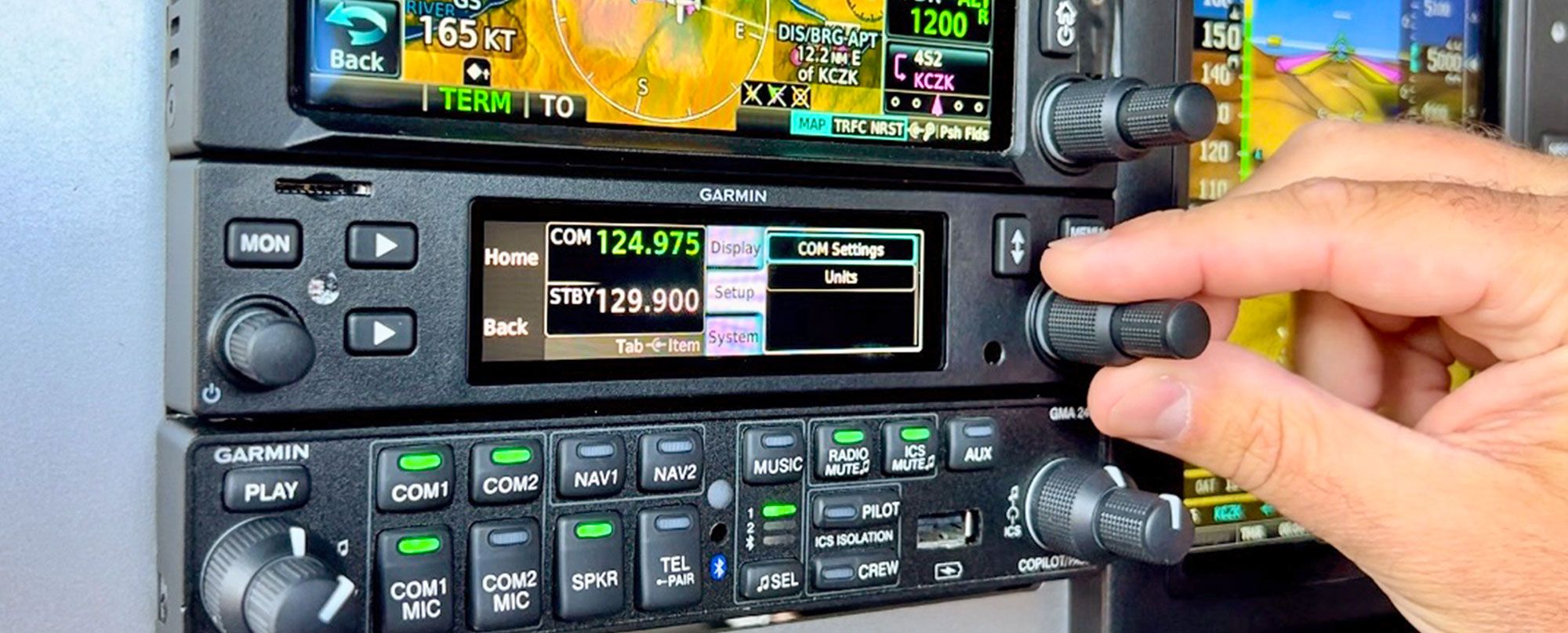
Despite rumors that Garmin would show up with a next-gen replacement for the popular G3X Touch integrated avionics suite, it did not. Instead, it was showing the new GTR 205x VHF comm radio aimed at the experimental market. There’s also a remote version—the GTR 205xR.
Based on the overall design of the certified GTR 205 radio, the new Bluetooth-equipped 205x radios share the 205’s feature set (there’s no touchscreen—buttons and knobs only), but have a built-in intercom and new audio features. This includes Garmin’s 3D audio processing, which creates the illusion that each connected audio source is coming from a unique location or seat position by transmitting different responses in each ear. There’s also a built-in database to search frequencies by identifier. The remote version is compatible with Garmin’s G3X Touch suite, where you tune the radio through the G3X Touch displays. The radios come standard with 10 watts of transmit power, and a 16-watt option is available for the panel-mount version.
Van’s Aircraft
As predicted, all eyes were on Van’s that seemingly emerged from Chapter 11 bankruptcy stronger. At the show, CEO Mikael Via and COO Shawn Ell outlined the company’s path forward and were straightforward about the internal and external issues that led to the bankruptcy in the first place, saying that the company let its customers down.
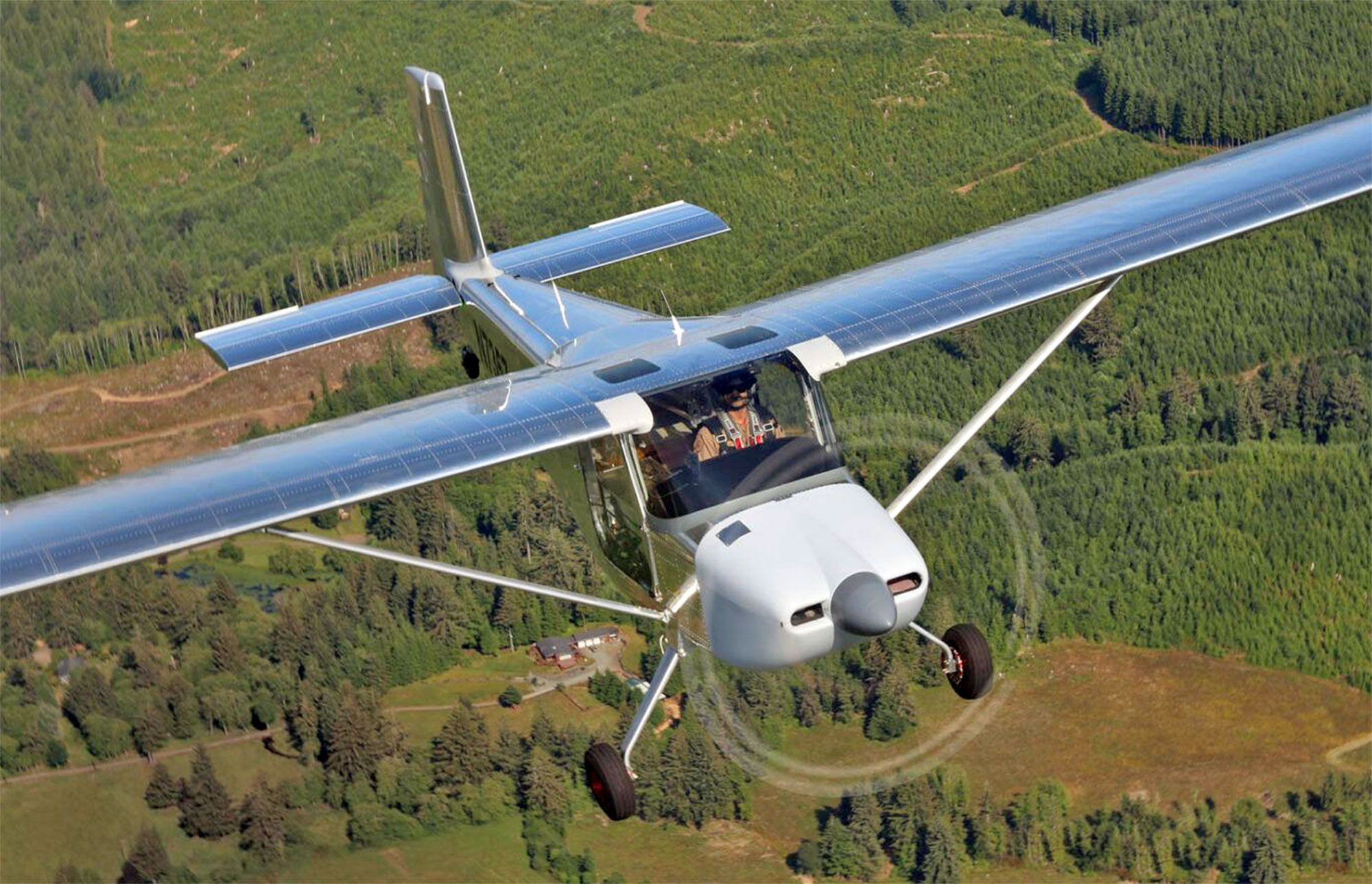
While many builders have complained about Van’s inability to provide quick technical support, things might get a lot better. Ell outlined how the company aims to have a 24-hour turnaround on technical/build questions, and will move toward “one-touch interactions,” meaning that it wants to respond quickly and thoroughly enough that follow-on questions aren’t needed. We like the sound of that.
Improvements to the Van’s operations seem to be paying off already. The company said it has shipped 792 kits since the first of the year, building 14 S-LSA RV-12s and delivering 674 kits from those who reordered under the new, higher prices implemented during Chapter 11; that amounts to delivering 45 percent of those orders on the books. It has also delivered 86 percent of the needed replacement parts for customers replacing laser-cut parts in their kits. We’ll keep tabs on it.
Always a standout at the show was the Sampson Sky Switchblade flying car, and we wonder if it will ever be a reality. Having fallen short of performance goals with the existing airframe and power system, Samson has redesigned the Switchblade to include a sleeker profile, and the redesign reveals fully concealed, tamper-proof propulsion components and flying surfaces in automotive mode. Plus, the propulsion system is now hybrid-electric with two boom-mounted propeller pods.
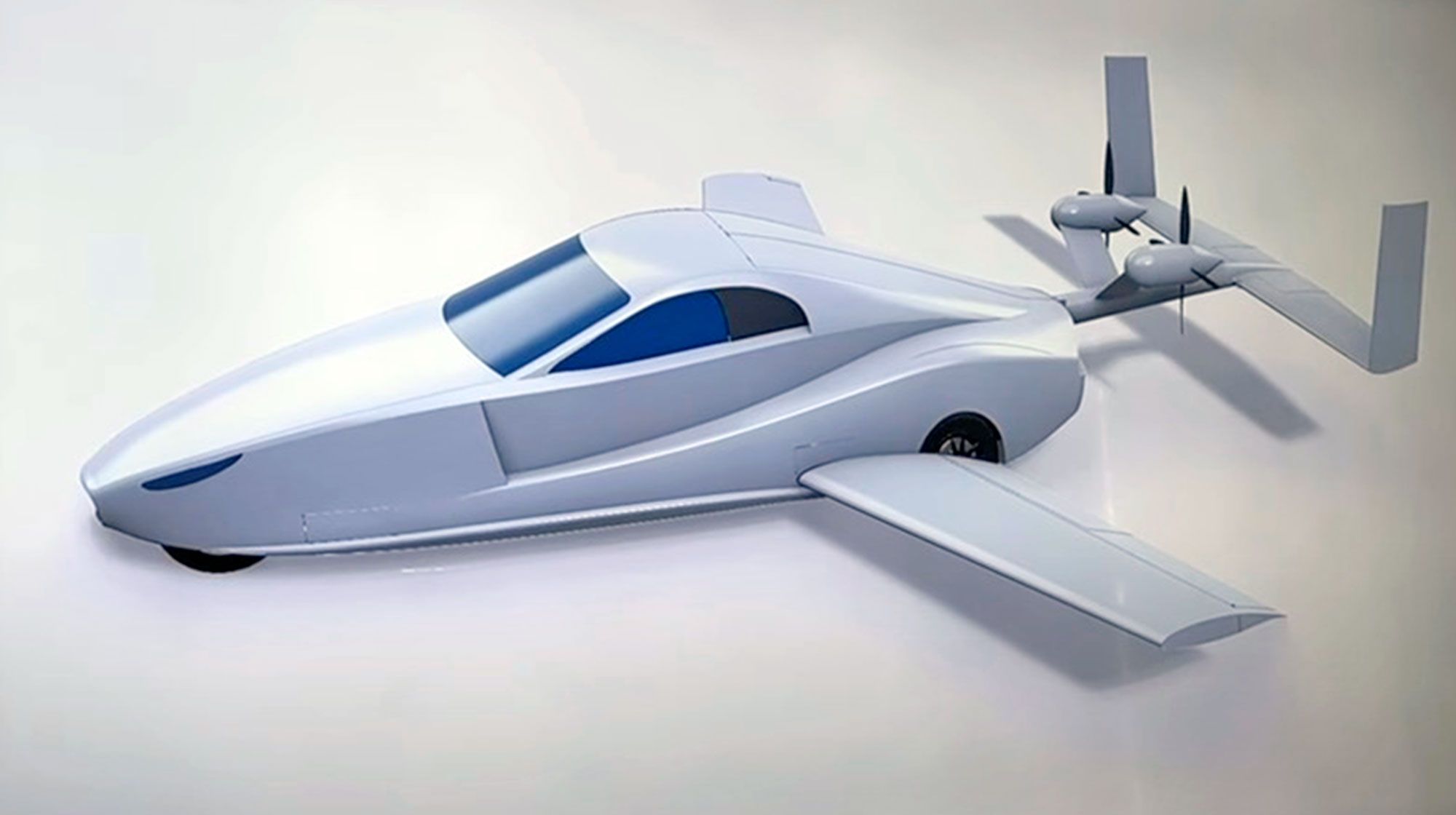
Engines
We wondered if engine maker DeltaHawk would show up with progress in delivering its certified DHK-series engines. It had no STCs for retrofit, but instead an inked deal with aircraft manufacturer Vulcanair. The two companies said they are sharing engineering data and technical resources to enable the engines to power Vulcanair’s new V1 aircraft, to be followed by the P.68 and A-Viator airframes. But why the DeltaHawk?
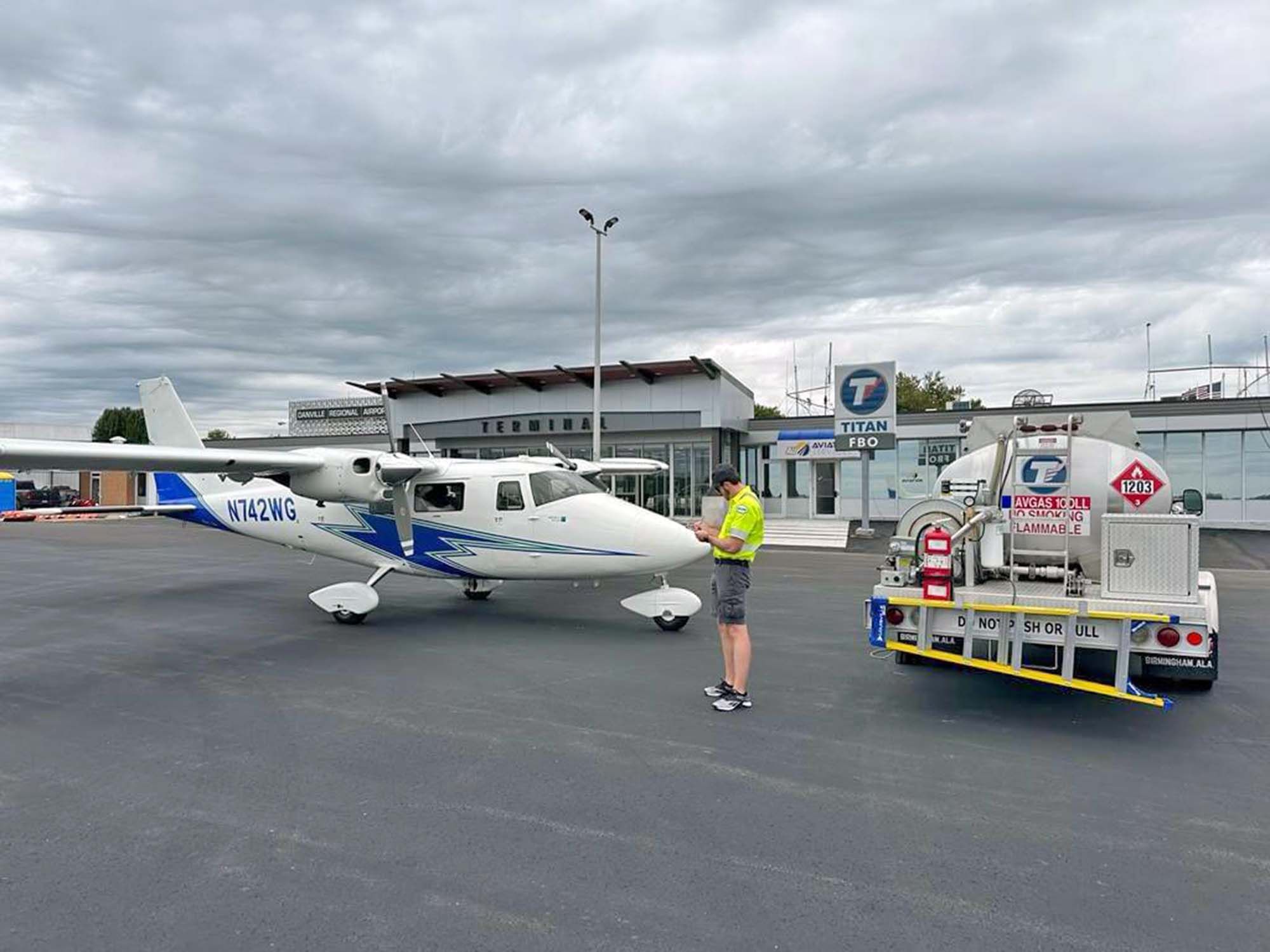
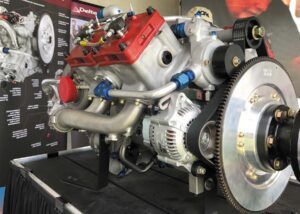
Michael E. McMann of Vulcanair Aircraft U.S. distributor Ameravia said in a press conference that the DHK engine in the V1 and P.68 platforms will expand the market not only because of lower cost of operation, but also because of fuel availability concerns. Meanwhile, DeltaHawk’s CEO, Christopher Ruud, thinks the DHK engine will be a success in both the training and international markets. We still want to see retrofits at prices competitive—if not better—than mainstream engines.
Meanwhile, over at the Continental Aerospace Technologies exhibit, the news was a new planned application for the CD-300 turbodiesel. It announced the in-the-works STC diesel engine retrofit for a bush flying workhorse—the Cessna 206 Stationair—that toils in some of the most remote places on the planet. Continental says it hopes to have the CD-300 Jet-A engine fitted to a demonstration aircraft by sometime in 2025 and is considering similar adaptations to other aircraft that use 300-horsepower engines. “We hope to have a demo aircraft at Oshkosh next year,” said CEO Karen Hong.
This is the company’s first foray into the retrofit market for the CD-300, which is the same engine that powers Diamond’s DA50 high-performance single. Reduced fuel burn and maintenance will compensate owners for the higher price of the compression combustion engine and give operators an alternative to 100LL in a world where access to avgas is shrinking. The engine and adaptation kit will sell for about $300,000, and more aircraft models will be STC’d in coming months.

More unleaded fuel drama
Meanwhile, the push for high-octane unleaded avgas got a fresh injection of chatter at the show when someone spotted—and circulated photos of—the AOPA test bed Beech Baron leaking fuel from the underside of the wing that carries G100UL.
As we reported in a flight trial in the March 2024 issue of Aviation Consumer, the Baron is being used as a test bed to compare the performance of GAMI’s G100UL unleaded avgas with 100LL.
AOPA left the Baron behind so mechanics can get a closer look at the leak. And it turns out that GAMI’s George Braly was correct in his original assessment that the cause was most likely a faulty or improperly installed fuel cell bladder or patch inside the bladder. Turns out the leak was from a patch in the Baron’s old fuel bladder—a common nuisance in aging Barons, Bonanzas and plenty of other models.
Tensions flared briefly at a forum on progress toward an unleaded replacement for avgas. During the public comment period after formal presentations, Tim Roehl, president of GAMI, challenged a couple of points made during the presentations of members and support staff from the End Aviation Gasoline Lead Emissions (EAGLE) and told the crowd that contrary to assertions made during the formal part of the forum, GAMI’s G100UL is indeed ready for distribution and sale. EAGLE member Pete Bunce, president of the General Aviation Manufacturers Association, stood up and dismissed Roehl’s assertion. “I totally disagree but that’s a discussion for another day,” said Bunce. But AOPA’s Mark Baker said “GAMI is as good or better” than 100LL, and the process has to “move forward” to get the correct fuel.



